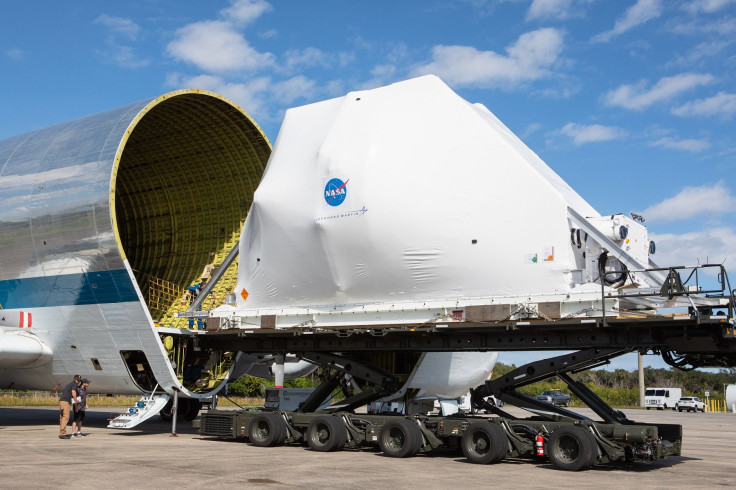NASA Moon Mission: Orion Spacecraft For Artemis Program Arrives At Ohio For Testing
Nearly 1,500 people gathered at Mansfield Lahm Airport in Ohio to welcome the arrival of NASA’s Super Guppy aircraft, which was carrying the Orion spacecraft for the Artemis mission to the moon.
The spacecraft will undergo various testing at the Plum Brook Station before it returns to NASA’s Kennedy Space Center.
Orion Spacecraft In Ohio
After its sunset arrival at Mansfield Lahm Airport on Sunday, Nov. 24, the Super Guppy aircraft was opened at sunrise the next day, revealing the Orion spacecraft inside the cavernous airplane.
Over the next months, Orion will be undergoing a two-phase test at the world’s largest vacuum chamber to simulate the conditions in space, the first being a thermal test, which will run for about 60 days.
During the thermal test, the Orion will be subjected to temperatures ranging from -250 to 300 degrees Fahrenheit to simulate the spacecraft flying in and out of sunlight and shadow ins space. The second phase, which will last for 14 days, is an electromagnetic interference and compatibility test to make sure that Orion’s electronics will work properly when operated at the same time.
Once the tests are completed, the Orion will return to NASA’s Kennedy Space Center where it will be integrated into the Space Launch System (SLS) rocket for the Artemis I launch.
That said, the SLS is still under development, and reports state that the earliest it can fly will be in 2021.
Artemis Program
The Artemis lunar exploration program aims to bring the first woman and the next man to the moon by 2024, and then use the knowledge gained from the moon mission to eventually send astronauts to Mars.
Artemis 1 will be an uncrewed flight meant to test SLS and Orion together before the crewed Artemis 2. For Artemis 3, the mission will be to land astronauts on the moon, then once a year thereafter. Should the missions succeed, the Artemis program will bring humans to a part of the moon no human has gone before: the South Pole.
Through the program, NASA aims to broaden international partnerships, establish American presence on the moon, inspire new generations to pursue STEM, and demonstrate new technologies, innovations, and even business approaches that will be needed for future Mars missions.
The program is so named after Greek Mythology’s Artemis, the goddess of the moon and sister of Apollo.

© Copyright IBTimes 2025. All rights reserved.






















